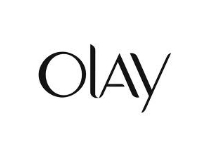Olay
Olay is a product truly born from love, as it was created by a man as a gift for his wife. In the 1950s, chemist Graham Wulff saw his wife Dinah’s frustration with the thick, waxy beauty creams tha...
Olay is a product truly born from love, as it was created by a man as a gift for his wife. In the 1950s, chemist Graham Wulff saw his wife Dinah’s frustration with the thick, waxy beauty creams that came in shoe-polish tins. They left her skin looking greasy, and they certainly didn’t fit with her feminine sensibility. Graham wanted to create a new beauty product for her—one that could not only moisturize her skin, but also leave her feeling beautiful and feminine. Together, Graham and Dinah fine-tuned everything from absorption and texture to the delicate pink shade and instantly recognizable fragrance. At last, the legendary Oil of Olay Beauty Fluid was born. Within five years, Olay was enjoying phenomenal success in South Africa, and in 1959 expanded into England, the United States, the Netherlands, Canada and Germany. Needless to say, the Olay business flourished. Eventually, Olay was sold to Richardson Merrill, which later became Richardson-Vicks. In 1985, Procter & Gamble bought Richardson-Vicks and gained the Olay brand. In 2000, Procter & Gamble decided to shorten the brand name to Olay. The formula had evolved over the years, and the original name no longer fit with what women have come to expect from Olay—a light, greaseless formula that absorbs quickly into the skin. Today, Olay is one of the most recognizable brands in the world. Yet through all the changes and innovations, the philosophy upheld by Graham Wulff remains just as relevant as ever: Help women look and feel beautiful. That’s a potent formula for success.Brand Details
Founder
Graham Wulff
Brand Strategy
Market segment
Value for Money
Core business
Beauty
Targets
Women
Olay Latest News
Olay with Yami Gautam Dhar for India
Olay Introduces Cleansing Melts at the 2024 Olympics
Sha'Carri Richardson x Olay
Olay and Coursera
Olay Financial Report
Last fiscal year ended on December 31, 2023



